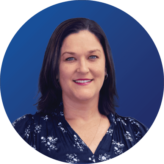
Many Australians haven’t appropriately planned for their death, recent research by Compare the Market has revealed.
The research of 1,009 Australian adults shows just one-in-three Australians have prepared a will, while only 21% have taken out a standalone life insurance policy or life insurance through their superannuation.*
Meanwhile, 52% of Australians haven’t planned for their death at all – an alarming statistic, given how much it can cost to wrap things up at the end of life.
Funeral costs in Australia can start at $4,000 for basic cremations but can blow out to more than $15,000 for some burials. Other costs to factor in for a funeral include death certificates, funeral director costs, coffin expenses, transportation of the body and more.
Meanwhile, other post-death expenditure, like mortgage or rental repayments, school fees for children, or even just the cost of maintaining the lives of those who remain, also need to be considered.
However, the study indicates that just 9% of adults – which could be more than 1 million Australians – have put money aside for their family in the event of their death.
Lana Hambilton, Head of Health, Life, and Income Protection Insurance at Compare the Market, said the findings show that Australians need to reconsider their end-of-life plans.
“It’s quite surprising that millions of Australians haven’t planned for the end of their life, given the financial impact it could have on the loved ones they leave behind,” Ms Hambilton said.
“Whether it’s starting conversations with your loved ones, preparing a will or organising life insurance if the worst were to happen, it’s never too early to start planning.”
For example, life insurance products are intended to provide a financial safety net if you were to lose your life, develop a terminal illness, become seriously injured, or become permanently disabled.
“Finding life insurance that’s right for you, and subsequently your family can be tough, particularly when we consider just how many options and types of insurance you could come across,” Ms Hambilton said.
“These insurance products also differ between insurance providers, so keep that in mind when searching for your own policy.”
Perhaps unsurprisingly, the research found that Baby Boomers over the age of 65 are most likely to have a will prepared (71% compared to just 6% of 18 to 24 year olds who have one). Baby Boomers are also the generation most prepared for death (77% compared to just 24% of Zoomers who have plans in place).
However, Millennials and young Gen Xers are the age groups most likely to have life insurance policies in place (almost double compared to Zoomers and Baby Boomers).
The study also showed that that in the ACT are most prepared for death (56%), followed by Western Australians (52%) and Tasmanians (50%). Conversely, South Australians are most likely to not have any plans in place (63%), followed by Victorians (57%).
Meanwhile, separate Compare the Market research of 1,000 adult Australians conducted in November 2022 found that 3% of Aussies had to make a claim on their life insurance policy.
New South Wales reported a higher-than-average amount of residents making claims on their life insurance policies at 4%. Zoomers also reported making more claims than any other generation.
Furthermore, our research suggests that women (3.7%) have been more likely to rely on their life insurance than males (2.8%).
Ms Hambilton’s top tips for life insurance
Incentive to live a healthy lifestyle
Habits like smoking and drinking, which can be detrimental to your health, will most often affect the cost of your insurance premium. Risky hobbies like skydiving can make it complicated too, because they might raise red flags for insurers.
“Life insurance and Income Protection are also something that can be offered through your superannuation fund, so check with your super provider if this is an option for you,” Ms Hambilton said.
“Additionally, your private health insurance policy may also provide you with some financial assistance in terms of paying for medical expenses; however, it’s imperative that you check your policy documents for inclusions and exclusions.
Be aware of waiting periods
Like private health insurance policies, Income Protection policies will similarly come with waiting periods that must be satisfied before any claims can start being paid. When taking out an Income Protection policy, you will select how long your waiting period is.
“While this might seem like a lot to digest in terms of setting yourself, and ultimately your family, up for life after death, trauma, or disability, free comparison tools are available to provide Aussies with a great platform for comparing the various types of life insurance on offer,” Ms Hambilton said.
Pay careful attention to the inclusions of your policy
When comparing your options, be aware of the inclusions and exclusions. Some events or illnesses may not be covered by a policy or you may need to meet set criteria to be eligible or make a claim.
*Survey of 1,009 Australian adults, conducted in October 2022.
For more information, please contact:
Phillip Portman | 0437 384 471 | [email protected]
Compare the Market is a comparison service that takes the hard work out of shopping around. We make it Simples for Australians to quickly and easily compare and buy insurance, energy and travel products from a range of providers. Our easy-to-use comparison tool helps you look for a range of products that may suit your needs and benefit your back pocket.
Compare the Market’s Life Insurance comparison is provided by Compare the Market’s trusted partner, Lifebroker Pty Ltd ACN 115 153 243 AFSL 400209 (Lifebroker). Compare the Market earns a commission from Lifebroker when you purchase a life or income protection insurance policy through the Compare the Market website.
Any advice given above is general and does not take into account your objectives, financial situation or needs. You should consider whether the advice is suitable for you and your personal circumstances, and before you make any decision about whether to purchase or continue to hold a product, you should read the PDS for that product. The PDS for each of the products we compare is available to download from the comparison results, and includes the details of the product issuer. The Target Market Determination for each of the products is available from the insurer and can also be accessed through the Lifebroker website.
Compare the Market does not compare all life insurers or products in the market. For more information about the range of insurers and products we compare, how our service works, and how we make our money (remembering that the service is free for you to use), visit www.comparethemarket.com.au to read our Financial Services Guide (Life Insurance Products).
Compare The Market is an authorised representative (number 434310) of Lifebroker Pty Ltd AFSL 400209 in respect of the financial services we provide in relation to the life insurance products compared by Lifebroker.








